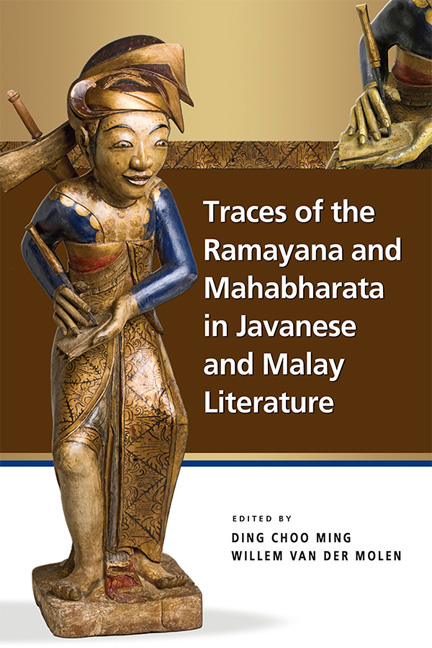Book contents
- Frontmatter
- Contents
- Abbreviations
- About the Contributors
- 1 Introduction
- 2 The Rāmāyaṇa in Java and Bali: Chapters from its Literary History
- 3 Abimanyu Gugur: The Death of Abimanyu in Classical and Modern Indonesian and Malay Literature
- 4 Drona's Betrayal and Bima's Brutality: Javanaiserie in Malay Culture
- 5 Ramayana and Mahabharata in Hikayat Misa Taman Jayeng Kusuma
- 6 The Death of Śalya: Balinese Textual and Iconographic Representations of the Kakawin Bhāratayuddha
- 7 The Illustrated Asṭabrata in Pakualaman Manuscript Art
- Index
- Nalanda-Sriwijaya Series
7 - The Illustrated Asṭabrata in Pakualaman Manuscript Art
Published online by Cambridge University Press: 04 July 2018
- Frontmatter
- Contents
- Abbreviations
- About the Contributors
- 1 Introduction
- 2 The Rāmāyaṇa in Java and Bali: Chapters from its Literary History
- 3 Abimanyu Gugur: The Death of Abimanyu in Classical and Modern Indonesian and Malay Literature
- 4 Drona's Betrayal and Bima's Brutality: Javanaiserie in Malay Culture
- 5 Ramayana and Mahabharata in Hikayat Misa Taman Jayeng Kusuma
- 6 The Death of Śalya: Balinese Textual and Iconographic Representations of the Kakawin Bhāratayuddha
- 7 The Illustrated Asṭabrata in Pakualaman Manuscript Art
- Index
- Nalanda-Sriwijaya Series
Summary
The Asṭabrata or “Eight Rules of Life”, which refer to the meritorious acts of the eight Hindu deities which the ideal king should emulate, was first introduced in Java through the Old Javanese kakawin Rāmāyaṇa, in which Rāma lectures Wibhīṣaṇa on the status and role of a king. This exposition of ancient Hindu political theory has remained popular in Java until this present day, Islamization notwithstanding. Over time it has even become regarded as a genuinely Javanese theory on leadership, and part of indigenous wayang philosophy. This chapter takes a closer look at a Yogyakarta version of the Asṭabrata made at the Pakualaman principality, represented in two early twentieth-century illuminated manuscripts with coloured drawings in wayang style. These rare and beautiful artefacts are a wonderful example of how the age-old Indic tradition was once redefined in an Islamicate environment. Examining the iconography of the eight deities that embody the ideal royal virtues, the conclusion is drawn that the illustrations seem to offer merely visual diversion. Although the two manuscripts discussed here were produced in a colonial context as gifts to high-ranking Dutch representatives of the colonial regime, the words and images do not seem to suggest a mode of “writing back” to the dominant Dutch ideology.
Keywords: Asṭabrata, Yogyakarta, Pakualaman, Javanese manuscript art, mirror for princes.
Rāma's Lessons on Leadership and “Javanese Genius”
In 2011, a book on the astabrata, also known under such designations as “the eightfold teachings”, “the eight ways of life”, and “the eight royal virtues”, was published in Indonesia, stating in the blurb that Indonesians were nowadays intoxicated by imported theories on leadership that, however, were ill-fitted to local realities.1 Hence, the author argued that local wisdom from Indonesia's own heritage as presented in the Astabrata is in fact still relevant (Yasasusastra 2011). Strictly speaking, however, the Astabrata is no less foreign-derived, being a concept of ancient Hindu political theory on “the divine qualities that a king was to emulate” (Weatherbee 1994, p. 414).
- Type
- Chapter
- Information
- Publisher: ISEAS–Yusof Ishak InstitutePrint publication year: 2018

